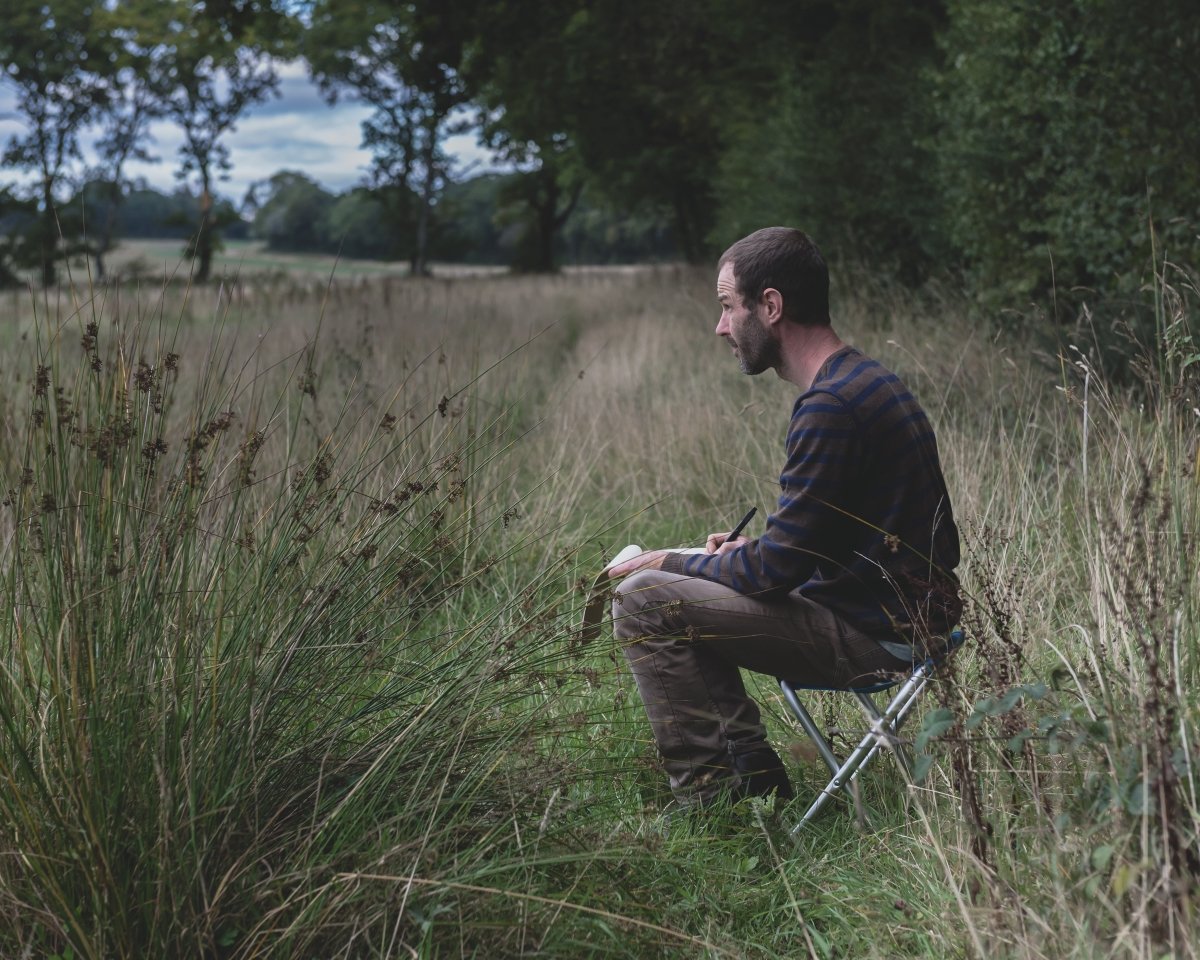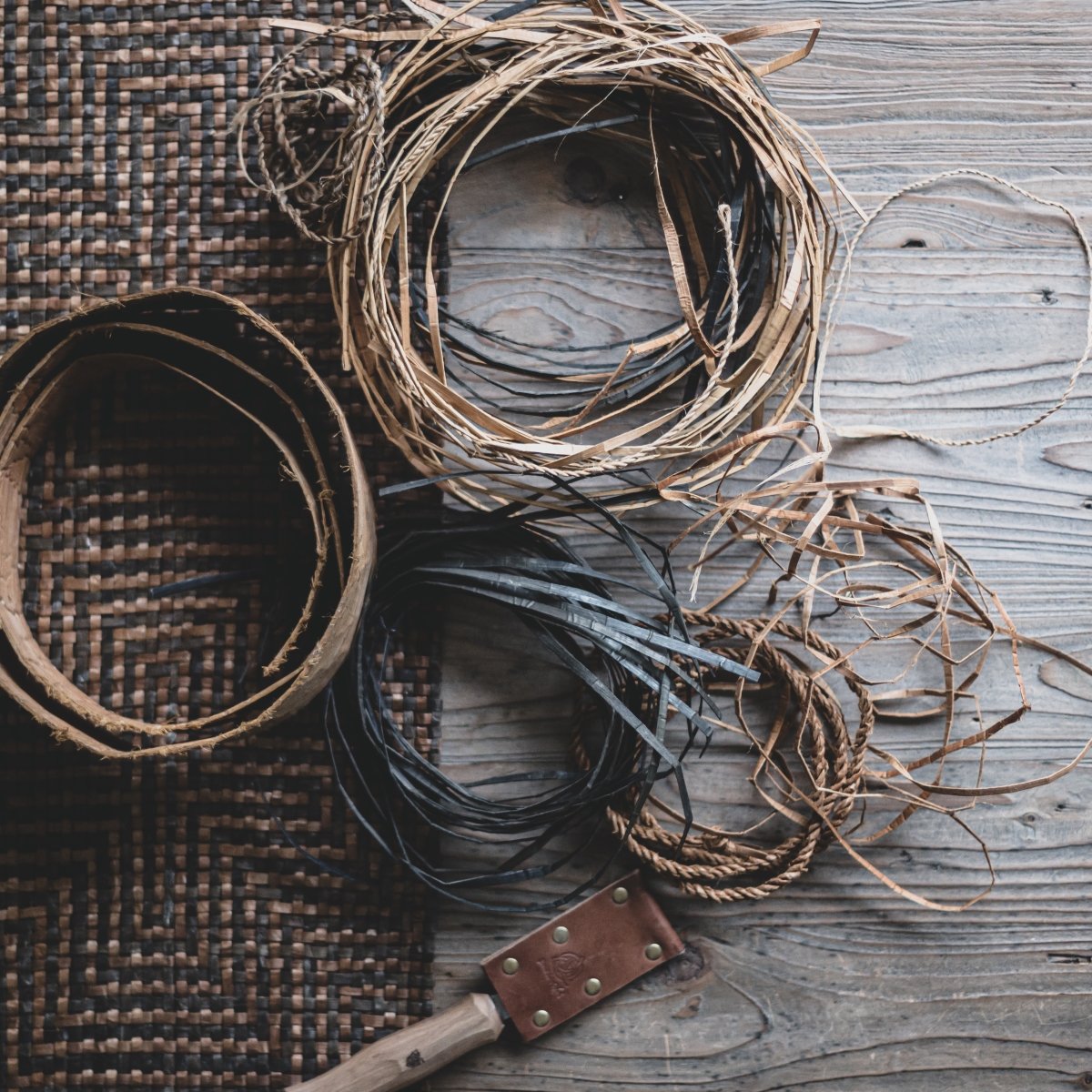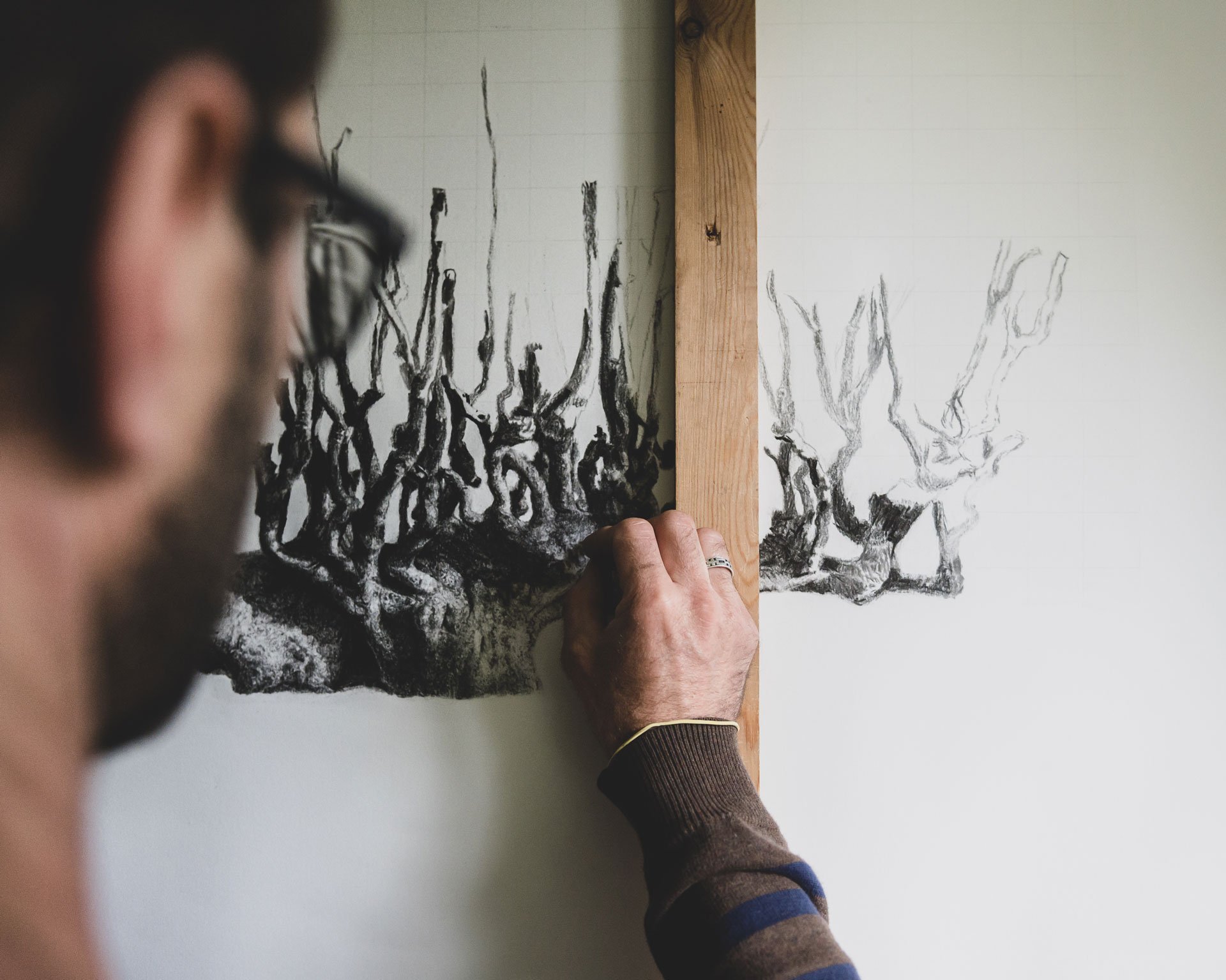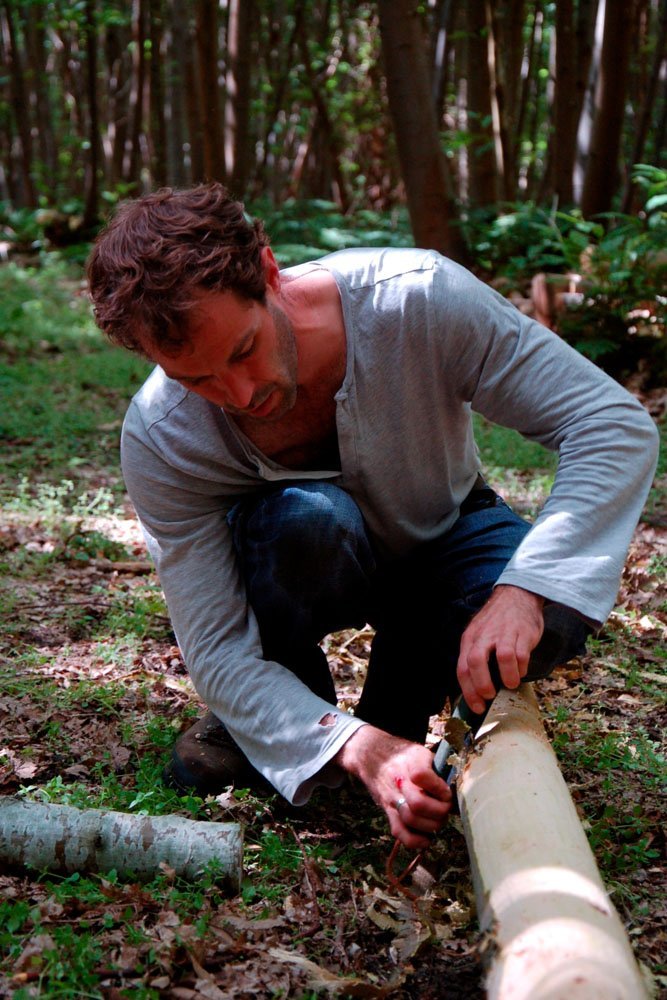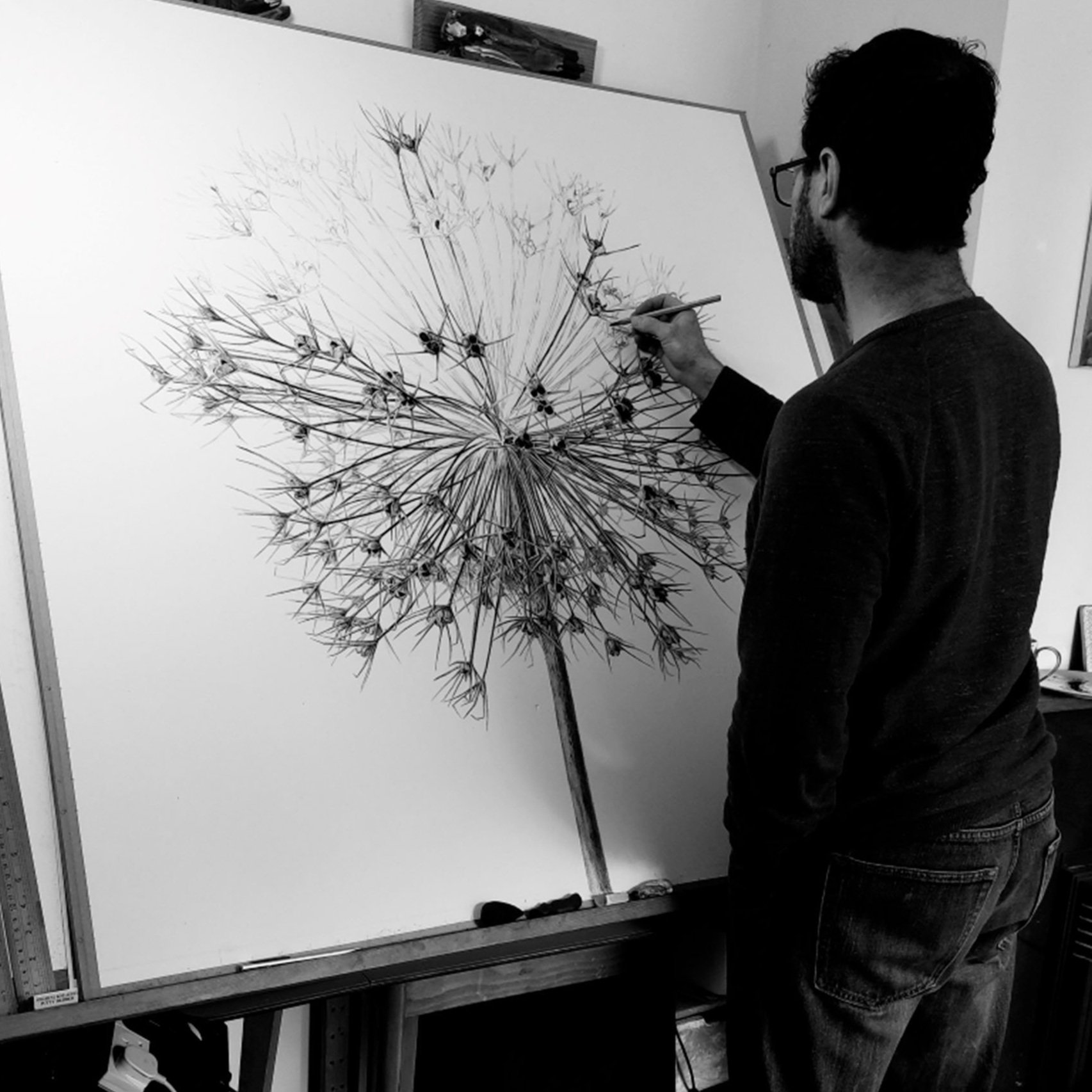I create art from nature’s canvas, a portal to the intricate narratives of the woods. The acts of Harvesting, Weaving and Drawing reveal the world of woodland life, from nature's math to ancient bushcraft skills.
“No one will protect what they don’t care about; and no one will care about what they have never experienced.”
— David Attenborough
-
My drawings are a response to my extensive experience in the outdoors. Spending years teaching bushcraft and outdoor living skills, I observed trees, plants, and local flora. These natural elements became essential tools for survival, from crafting fishing hooks to making baskets. With simple tools like an axe, knife, and saw, I developed an intimate understanding of these subjects, which I value through my art.
Living in the beautiful Southeast of England, surrounded by woodlands deeply influences my work. I aim to capture the beauty of everyday organism’s like seed pods and lichens, elevating them to a special status. It's a reminder that every element in nature, from the tiniest lichen to the tallest tree, is essential.
Two quotes resonate with me: David Attenborough's reminder that we protect what we care about, and Robin Wall Kimmerer's idea that paying attention is a form of reciprocity with the living world. Through my art and craftsmanship, I hope to inspire a deeper connection to nature and a sense of responsibility for its preservation.
-
I've been using charcoal since my Art College days. It played a pivotal role during extensive life drawing sessions, where I explored its nuances for about two years. This experience provided me with a solid foundation in using charcoal as a drawing medium.
One of the aspects I appreciate about charcoal is its simplicity. It limits you to working with tones, eliminating the need to concern myself with colour. This simplicity immediately guides the type of drawing I create. Charcoal's organic nature, originating from the earth and returning to it, adds to its appeal.
I'm also drawn to the mechanical aspect of charcoal. You apply these fine particles to the surface, scrape them off the charcoal stick, and once they're on paper, it's like the beginning of a journey. You can manipulate, spread, blend, and layer it.
This process mirrors how I approach drawing, starting lightly and gradually building up tones layer by layer. This technique results in a smooth, velvety texture in my drawings, which works particularly well for subjects like lichen, plants, and trees. It's a method I find truly satisfying.
-
I'm drawn to representational and hyper-detailed drawing because it allows me to delve deep into the intricacies of the subjects. Whether it's capturing the textures of tiny lichens, often just a few centimeters long and easily overlooked, or the grandeur of colossal trees, each drawing brings these elements into sharp focus.
These small, seemingly insignificant details, like lichens and fungi, are the foundation of life on our planet. By magnifying them in hyper detail, I aim to showcase their importance.
Drawing trees, on the other hand, is an awe-inspiring experience. They are some of the longest and largest living organisms on Earth. Whether it's a colossal sweet chestnut tree like Colossus or ancient yews in Kingley Vale, these trees hold a deep sense of history and majesty.
My art aims to celebrate both the grandeur and the subtleties of the natural world, highlighting their significance in our lives and the planet's ecosystem.
-
I discovered the craft of bark weaving during my early 2000s tenure as a bushcraft and outdoor living instructor. As part of my role, I delved into primitive skills, including the use of tree barks for crafting. Among these ancient techniques, it was the art of basketry that deeply resonated with me.
Before this I had pursued a degree in packaging design, which didn't align with my passions or values. This realisation prompted me to change course, transitioning into the world of bushcraft and the great outdoors. Interestingly, my prior exposure to 3D thinking and packaging design later found relevance when I began weaving tree barks into baskets.
Working with tree barks holds a special appeal for me. The process of harvesting raw bark into weaving material is not only enjoyable but also therapeutic and profoundly mindful. As I weave baskets, the challenge of crafting a 3D object from flat material intrigues me. The repetitive nature of the work becomes a meditation, and the pursuit of precision and neatness adds an extra layer of satisfaction to my craft.
-
I draw inspiration for my cedar weaving patterns from a blend of interests in science, mathematics, and the natural world. While I'm captivated by cutting-edge scientific discoveries and space exploration, I also hold a deep reverence for the outdoors and the environment.
This duality shapes my work, reflecting the delicate balance between human pursuit of knowledge and its impact on nature. I use mathematical concepts, including those from particle physics, to craft patterns and shapes. Employing tree bark, a humble material with a millennia-old history, to represent these ideas allows me to comment on the consequences of our relentless quest for knowledge.
Cedar weaving, originating from the Northwest coast of Canada and America, is steeped in cultural significance. I've learned techniques from First Nation cedar weavers through books and online resources, and I'm immensely grateful for their knowledge. My dream is to one day weave alongside these experts in Canada, a bucket list adventure.
While sweet chestnut bark is not a typical weaving material, I draw inspiration from diverse global techniques when working with it.
One prominent pattern I use in cedar bark weaving, employing both natural and dyed bark, resembles a labyrinthine design I discovered on a First Nation Canadian cedar mat. This intricate pattern allows me to create shapes and designs using continuous lines, offering endless creative possibilities. I began with a simple mathematical sine wave, which resulted in a striking image. Combining two slightly offset sine waves led to a pattern reminiscent of the DNA double helix.
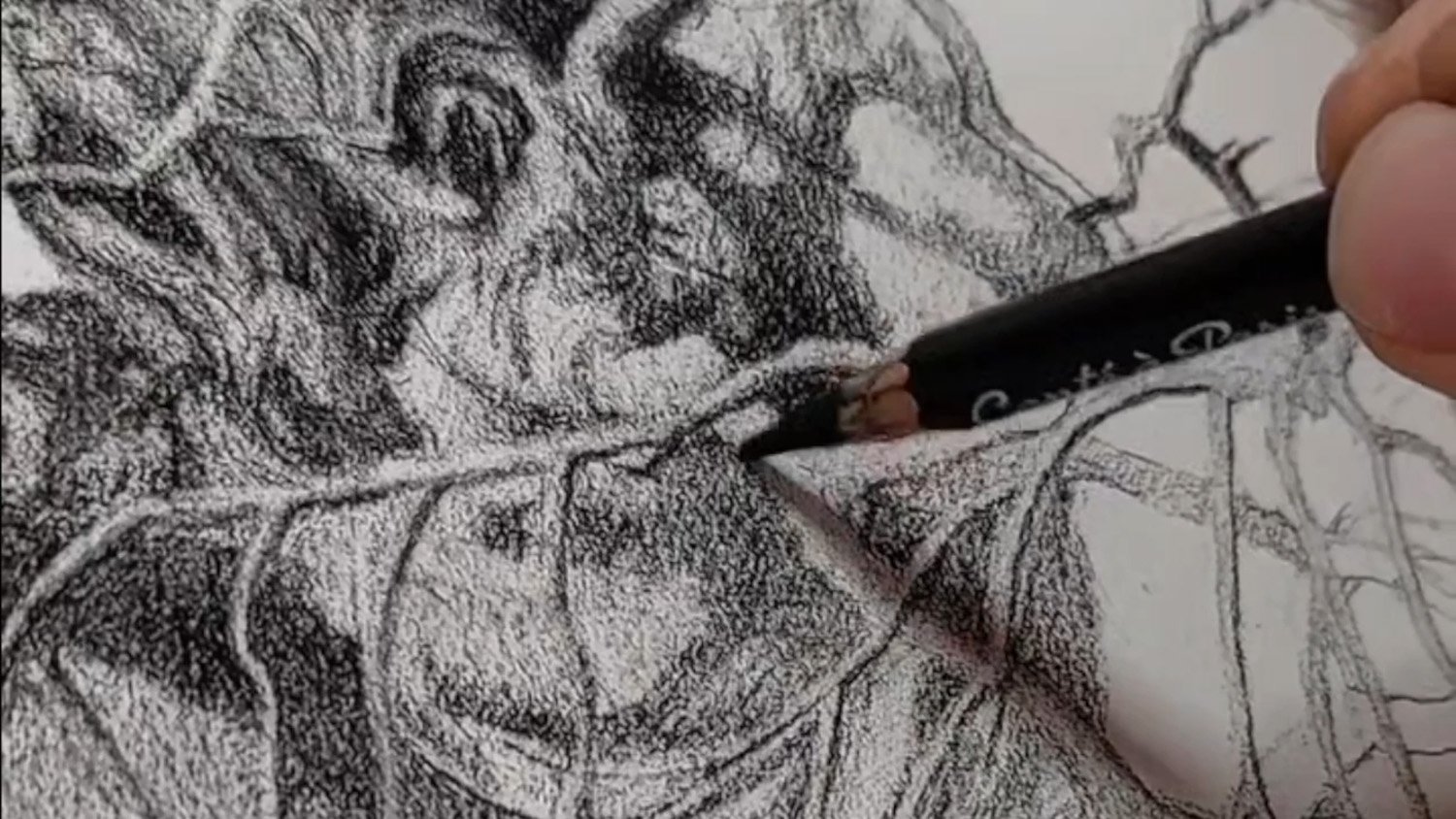
Biography
Nick McMillen's artistic journey unfolds through a tapestry of outdoor experiences and a profound connection to nature. With a extensive foundation in land management, conservation, and rural crafts education, Nick has honed a diverse skill set over many years that mirrors the landscapes he's traversed.
In his artistic practice, Nick marries traditional craftsmanship with a zeal for the outdoors. As a botanical artist and craftsman, his creations bridge two worlds. His botanical charcoal drawings meticulously portray the intricate beauty of British woodlands, from the sprawling branches of trees to the tiniest lichens and seeds. With each stroke, he unveils the enchanting intricacies of nature.
In the realm of craftsmanship, Nick's expertise displays in the ancient craft of tree bark weaving. Employing materials sourced from local woodlands, he weaves three-dimensional objects, ranging from timeless baskets to exquisite wall hangings. His work pay homage to age-old traditions while infusing them with a contemporary voice.
Nick's work is a call to collectors who treasure the blend of art and the natural world. His creations invite you to immerse yourself in the wonders of the woodlands, and to partake in the vital mission of preserving what they offer, to cherish and protect, for generations to come.
Supporters
The Craft Council Directory
The Worshipful Company of Basketmakers
The Basketmakers’ Association
The Society of Botanical Artists
The Shirley Sherwood Collection
The Cockpit Studios
Meet Nick’s Wife Mollie
Mollie McMillen is a master weaver specialising in crafting bespoke wonders from willow, bark, and plant fibres. With a profound connection to nature and a commitment to preserving traditional weaving techniques, she offers a unique blend of artistry and sustainability.
Collaborate with Mollie to create pieces that not only elevate your spaces but also leave a gentle footprint on the land. Mollie can transform your exterior spaces with bespoke willow fences, offers Basketry and Weaving Courses, and crafts Eco Coffins with care, alongside commissioning homewares ranging from lighting to cherished heirlooms.

